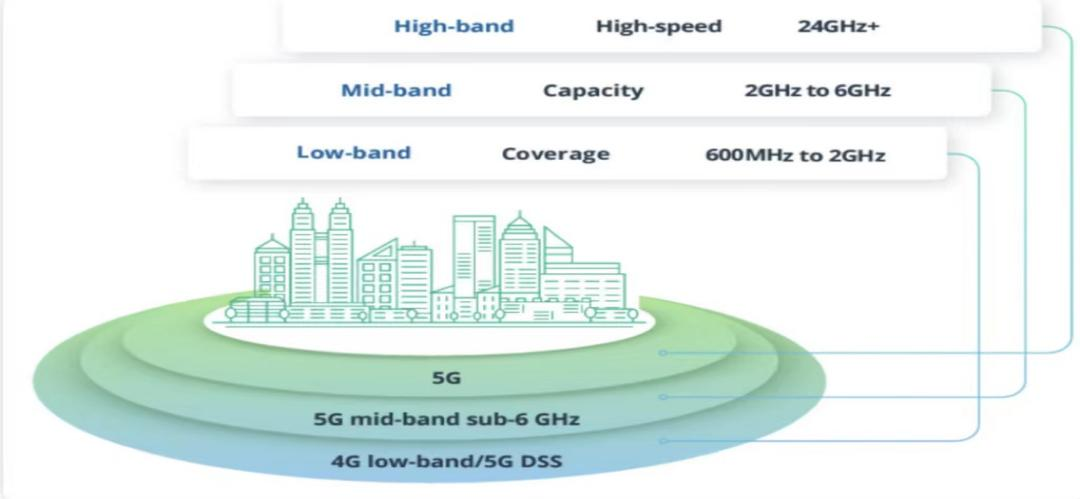
By admin Date of issue: Aug 31,2023
This technical article delves into a comparative analysis of the 100MHz frequency bandwidth in the context of 5G (fifth-generation) and LTE (Long-Term Evolution) wireless communication technologies. We explore the key differences between these two technologies, focusing on their respective implementations of the 100MHz frequency band. Through an examination of factors such as data rates, latency, spectral efficiency, and potential use cases, we aim to provide a comprehensive understanding of which technology offers a higher performance level within the 100MHz frequency spectrum.
1. Introduction:
Wireless communication technologies have evolved significantly, with 5G and LTE being two prominent players in the telecommunications landscape. Both technologies offer high-speed data transmission, but they differ in terms of their underlying architectures and capabilities. This article compares the performance of 5G and LTE when utilizing a 100MHz frequency bandwidth.
2. 5G at 100MHz Frequency:
5G technology is designed to offer enhanced data rates, lower latency, and increased network capacity compared to its predecessors. Operating at higher frequency bands, such as millimeter waves, 5G can deliver substantial data rates. In the case of 100MHz frequency allocation, 5G utilizes advanced modulation schemes, massive MIMO (Multiple-Input Multiple-Output) technology, and beamforming to achieve efficient spectrum utilization. The use of larger bandwidths in 5G enhances its data-carrying capacity, making it suitable for bandwidth-intensive applications like high-definition video streaming and augmented reality.

3. LTE at 100MHz Frequency:
LTE, although a predecessor to 5G, is still widely used and provides robust connectivity. In a 100MHz frequency allocation, LTE employs technologies like carrier aggregation and advanced coding schemes to maximize data throughput. While it might not achieve the same peak data rates as 5G, LTE's mature infrastructure and broad coverage make it suitable for widespread connectivity and services such as voice calls, internet browsing, and video conferencing.
4. Comparative Analysis:
4.1 Data Rates:
5G's advanced modulation schemes and larger bandwidths enable it to achieve higher peak data rates compared to LTE. In a 100MHz bandwidth, 5G can provide significantly faster download and upload speeds, making it better suited for applications demanding extremely high data throughput.
4.2 Latency:
5G's architecture is designed to deliver ultra-low latency, which is crucial for real-time applications like gaming and remote surgery. While LTE also offers low latency, 5G's dedicated network slicing and edge computing capabilities give it an advantage in reducing communication delays.
4.3 Spectral Efficiency:
Due to its advanced technologies like massive MIMO and beamforming, 5G demonstrates superior spectral efficiency in utilizing the allocated frequency. This results in better overall network capacity and user experience within the 100MHz spectrum.
4.4 Use Cases:
5G's high data rates and low latency make it ideal for applications such as industrial IoT, autonomous vehicles, and 8K video streaming. LTE, on the other hand, remains well-suited for traditional mobile communication, IoT devices with moderate data requirements, and areas with less dense user populations.
5. Conclusion:
In the comparison between 5G and LTE operating at 100MHz frequency, 5G stands out as the technology offering higher performance. Its advanced technologies, enhanced data rates, lower latency, and superior spectral efficiency make it well-suited for data-intensive applications and emerging technologies that demand substantial network resources. However, LTE's wide deployment, reliability, and compatibility ensure its continued relevance for various use cases. The choice between the two technologies ultimately depends on the specific requirements of the application and the region's network infrastructure.
ADD:116 ChengYang Road, XiangCheng District, SuZhou City,JiangSu Province, China
Skype:sunbenku1
Email:support@wallystech.com
Copyright © 2020 Wallys Communications (Suzhou ) Co., LTD Sitemap



